D Link CHS150A1 mydlinkTM Wi-Fi Motion Sensor User Manual
D Link Corporation mydlinkTM Wi-Fi Motion Sensor
D Link >
User Manual.pdf
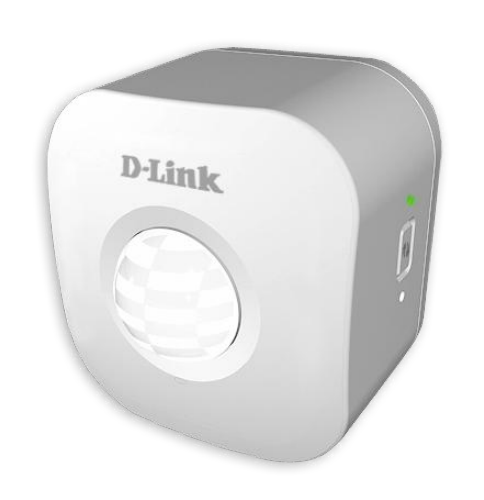
D-Link
Version: 0.1 02/01/2014
UserManual
WiFi Motion Sensor
DCH-S150

D-Link DCH-S150 User Manual
2
Table of
Contents
Table of
Contents
Product Overview
........................................................
3
Package Contents
...................................................
3
System Requirements .............................................
4
Introduction
..............................................................
5
Features
..................................................................
6
Hardware
Overview
.................................................
7
Connections
.......................................................
7
Side....................................................................
8
Installation
....................................................................
9
Connecting
the
Powerline
AV Adapter
....................
9
Technical Specifications........................................... 10
Federal Communication Commission In
terference
Statement
..............................................................
11
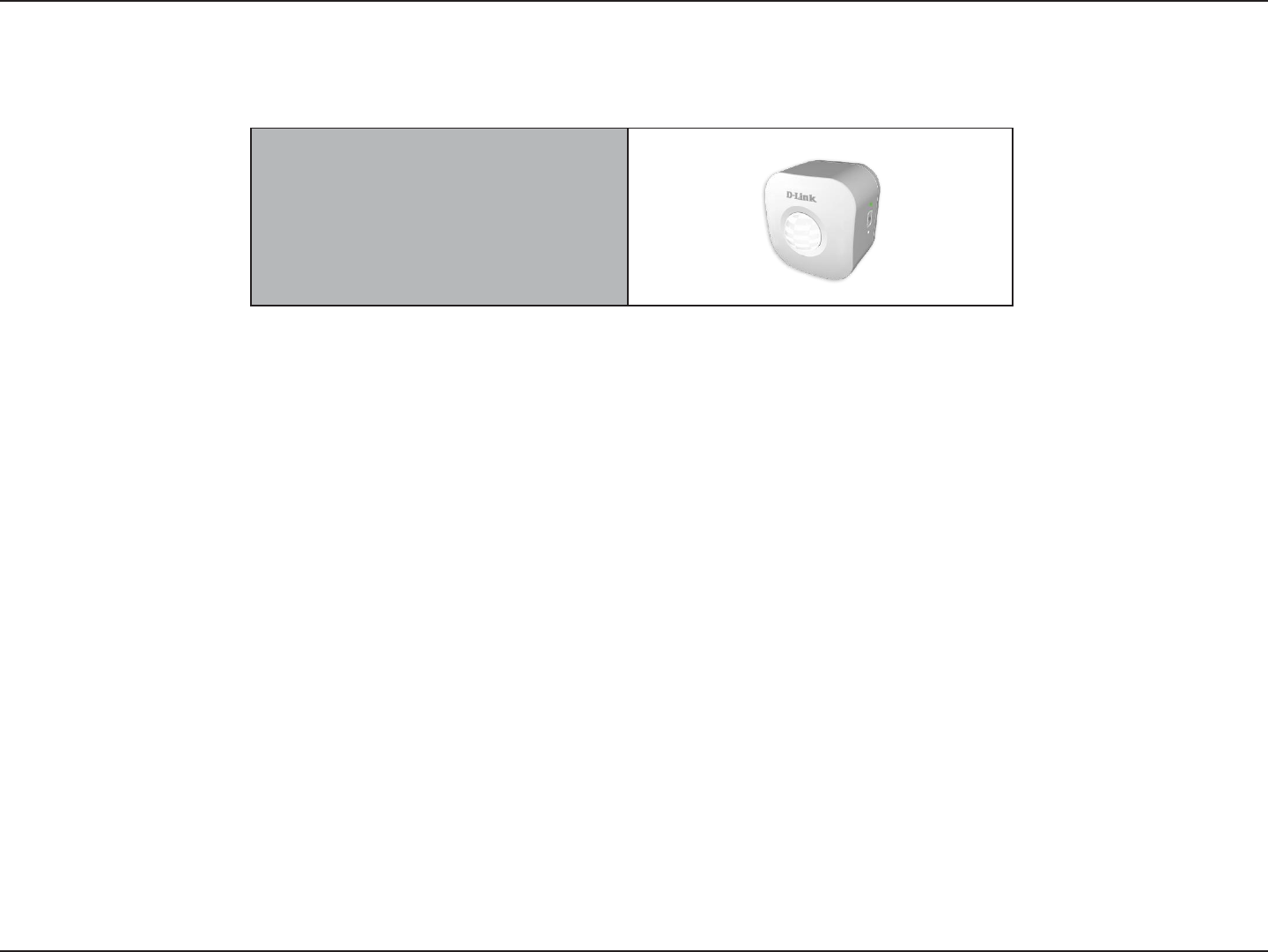
D-Link DCH-S150 User Manual
3
Section 1 - Product Overview
Package Contents
D-Link DCH-S150
WiFi Motion Sensor

D-Link DCH-S150 User Manual
4
Section 1 - Product Overview
System Requirements
Network
Requirements
IEEE
802.
11b/g/n wi
reless clients
App-based Configuration
Device
Requirements
Operating System:
iOS6/7 or above
Android 4.0/4.2 or above.

D-Link DCH-S150 User Manual
5
Section 1 - Product Overview
Introduction
Automate your connected home devices wirelessly using a PIR motion detection sensor with the D-Link DCH-S150 Motion Detection Sensor. Simply
connect it to your wireless network at a touch of a button and it will trigger devices connected to a D-Link SmartPlug any time motion is detected. No
matter if it’s a lamp or a fan, with the DCH-S150, you can automatically trigger devices plugged to wirelessly-connected D-Link SmartPlugs
throughout your home. Even more, you can stay updated with instant push notifications to your mobile device while you’re away from home; so you’ll
know when someone is home.

D-Link DCH-S150 User Manual
6
Section 1 - Product Overview
Features
Compatible
with
802.11b/g
and
802.11n Devices
- The DCH-S150
i
s
fully
co
m
p
a
t
i
b
l
e
w
i
t
h
t
h
e
802.11b/g/n
standards
.
WPS PBC - (Wi-Fi
Protected Setup Push
Button Configuration)
Push
Button Configuration is a
button
that can be
pressed
to add the device to an existing network or to
create
a new network. A virtual
button
can be
used
on the utility
while a physical button is
placed
on the side of the
device.
This
easy setup method
allows you to form a
secured wireless
link
between
the DCH-S150 and
another
WPS
enabled
device. A PC is no longer
needed
to log into the
Web-based interface.
User-friendly Setup
Wizard - Through its
easy-to-use app-based which
iOS or Android system
user you can configure
your
access
point to your specific
settings
within
minutes.
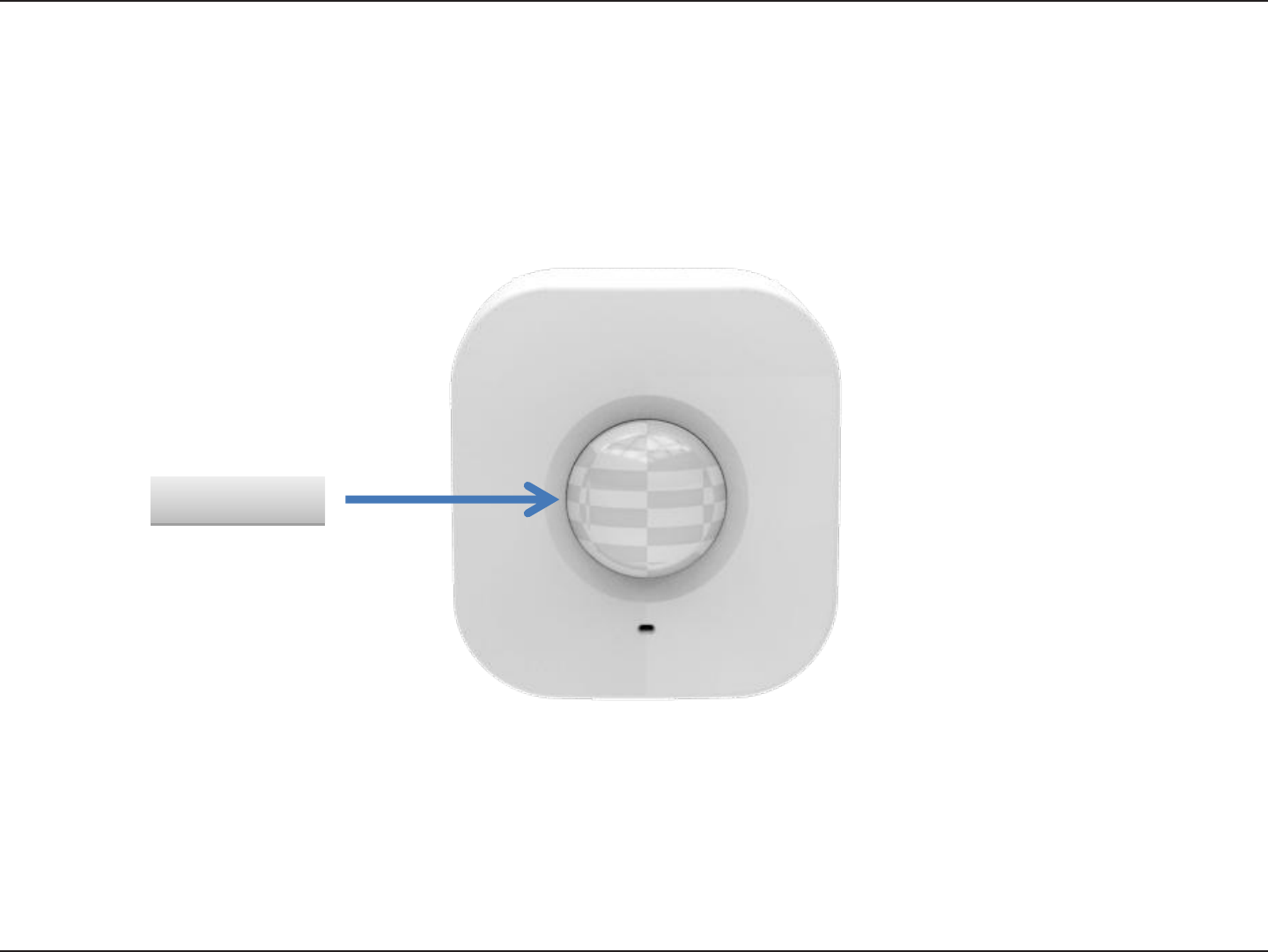
D-Link DCH-S150 User Manual
7
Section 1 - Product Overview
Hardware
Overview
Connections
Motion Sensor
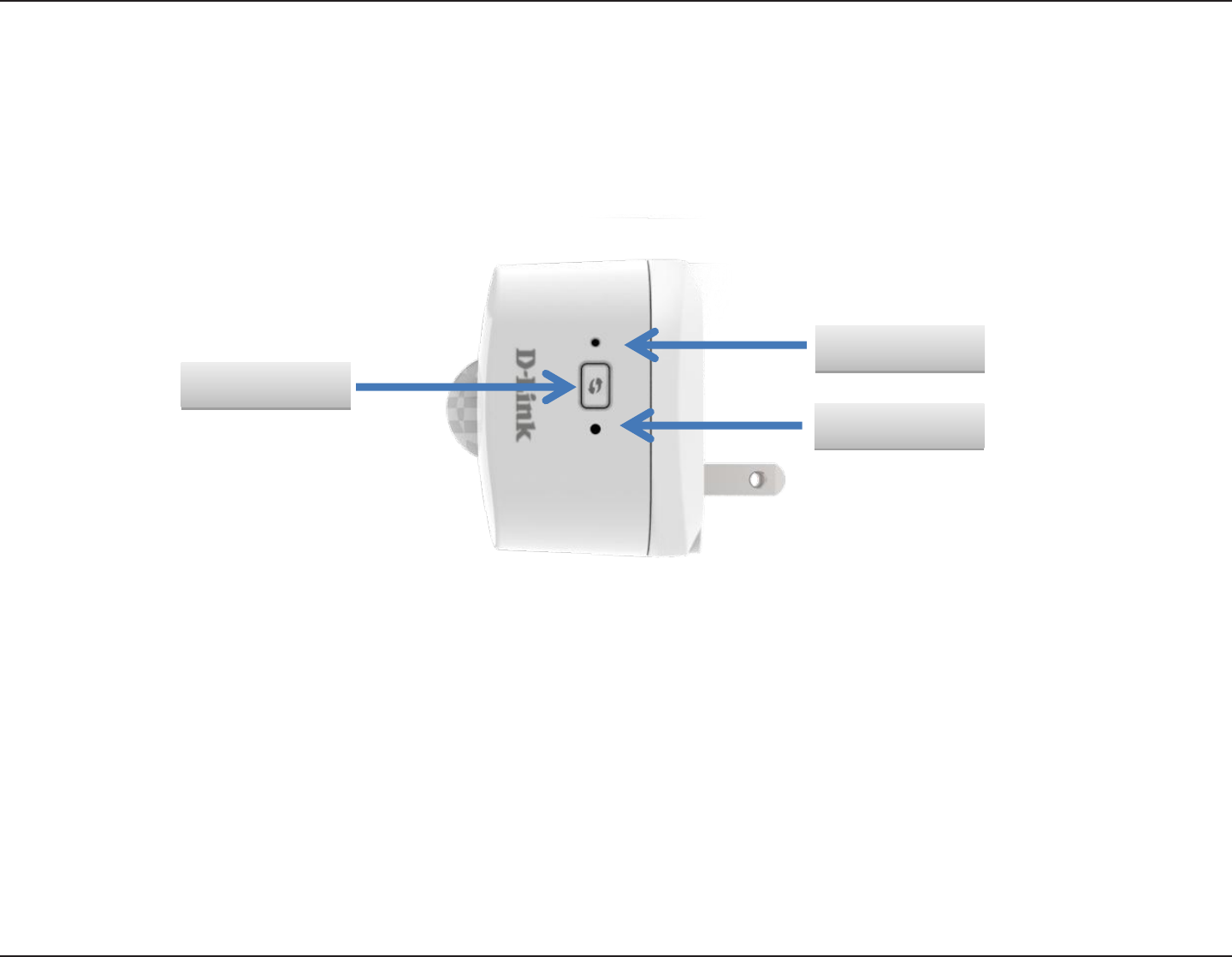
D-Link DCH-S150 User Manual
8
Section 1 - Product Overview
Hardware
Overview
Side
Status LED
Reset button
WPS button
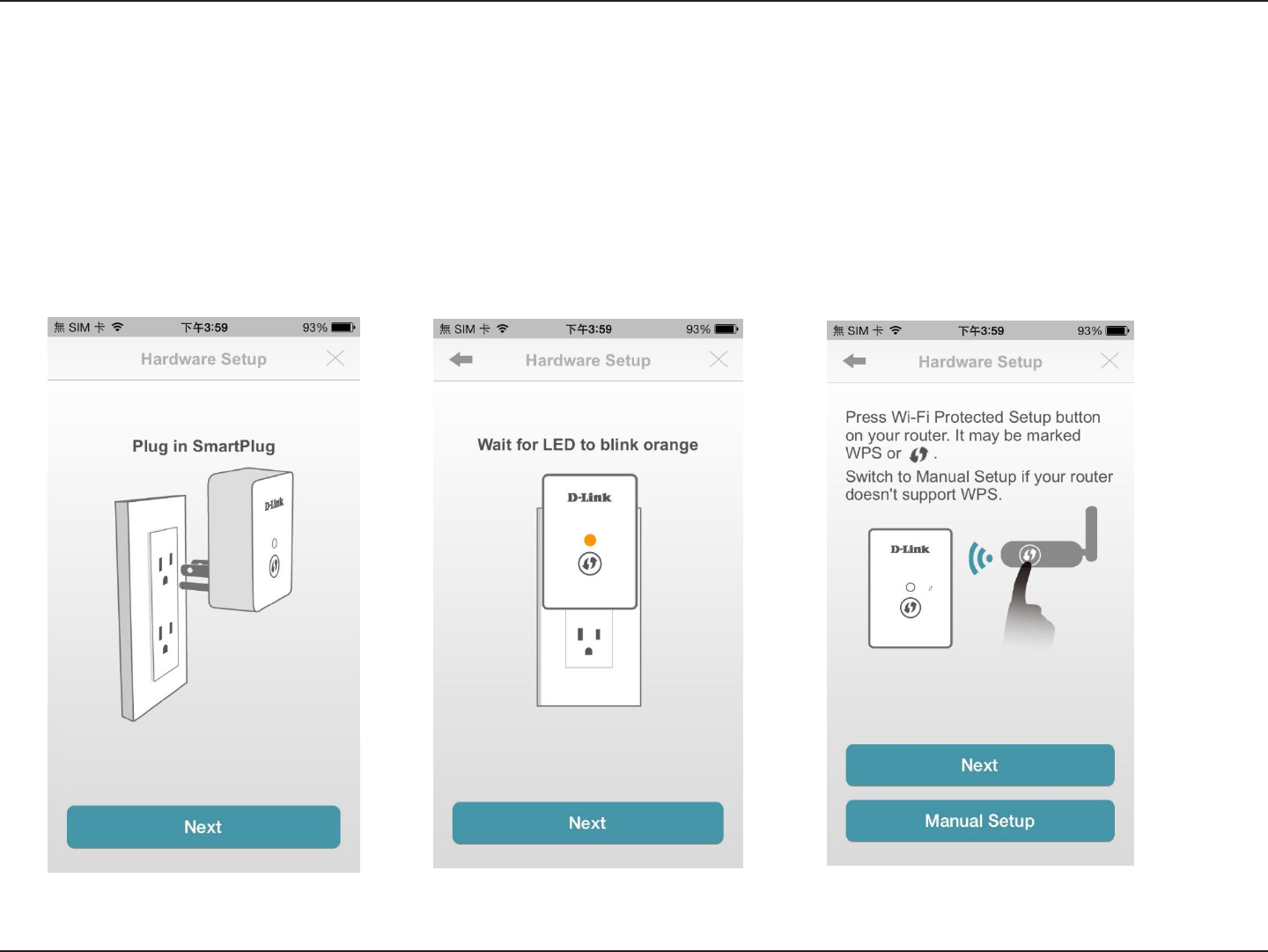
D-Link DCH-S150 User Manual
9
Section
2 -
Installation
Installation
Connecting
the
WiFi Motion Sensor
It
i
s
easy
to connect
the DCH-S150 s i m p l y by performing the following
instructions:
1. Plug the DCH-S150 into the wall
outlet/socket, then follow App user guide.
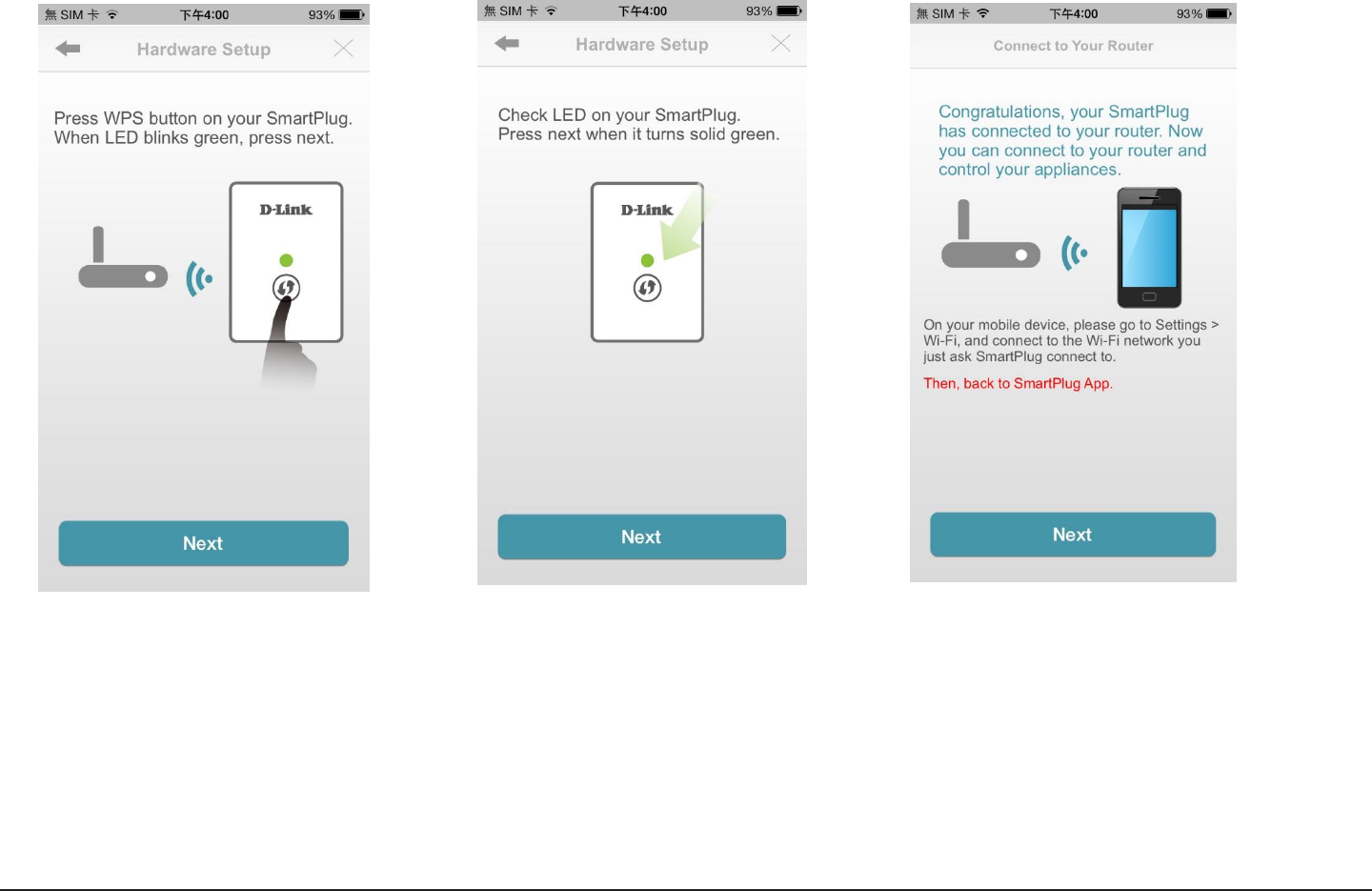
D-Link DCH-S150 User Manual
1
0

D-Link DCH-S150 User Manual
1
1
Appendix A -
Technical Specifications
DEVICE
INTERFACES
Technical
Specifications
DIMENSIONS
•
802.11n
WLAN (AP
wireless connection
to
computers)
• Common
connect button
•
Reset button
WIRELESS LAN
•
802.11b/g
standards
•
802.11n standard
•
Wireless speed:
up to 300 Mbps
(802.11n)
• 64/128-bit WEP data
encryption
• WPA/WPA2 (Wi-Fi
Protected Access)
ADVANCED FEATURES
• IPv6
support
OPERATION MODES
• AP 2.4
GHz
• 58 x 54 x 42.85
mm
WEIGHT
• 80
grams
(0.176 lb)
MAXIMUM
POWER CONSUMPTION
• AC: 3
watts
TEMPERATURE
•
Operating:
0 to 45 °C (32 to 113
°F)
•
Storage:
-20 to 65 °C (-4 to 149
°F)
HUMIDITY
•
Operating:
10% to 90%
non-condensing
•
Storage:
5% to 95%
non-condensing
CERTIFICATIONS
•
FCC
• IC
• UL
1. Maximum wireless signal rate derived from IEEE Standard 802.11g and 802.11n specifications. Actual data throughput will vary. Network conditions and environmental factors,
including volume of network traffic, building materials and construction, and network overhead, lower actual data throughput rate. Environmental conditions will adversely
affect wireless signal range.
2. Range
varies
depending
on country’s
regulation.
3. Do not use for Live & Security, Remote Control, or Energy Management

D-Link DCH-S150 User Manual
1
2
Appendix A -
Technical Specifications
Federal Communication Commission Interference Statement
This device
complies
with Part 15 of the FCC
Rules. Operation
is
subject
to the
following
two
conditions:
(1) This
device
may not
cause
harmful
interference,
and (2) this device must
accept
any
interference received,
including
interference
that may
cause undesired operation.
This
equipment
has
been tested
and found to comply with the limits for a
Class
B digital device,
pursuant
to Part 15 of
the FCC
R
u
l
e
s
.
These
li
m
i
t
s
are
d
e
s
i
gn
e
d
to
p
r
o
v
i
d
e
r
ea
s
on
a
b
l
e
p
r
o
t
e
c
t
i
on
a
g
a
i
n
s
t
h
a
r
m
f
u
l
i
n
t
e
r
f
e
r
e
nc
e
i
n
a r
e
s
i
d
e
n
t
i
a
l
installation. This
equipment generates, uses
and can
radiate
radio
frequency energy
and,
if
not installed and
used
in
accordance
with the
instructions,
may
cause
harmful
interference
to radio
communications.
However, there is
no
guarantee
that
interference
will
not occur in a particular installation.
If
this
equipment does cause
harmful
interference
to radio or television
reception,
which can be
determined
by turning the
equipment
off and on, the user is
encouraged
to try to correct the
interference
by one of the following
measures:
-
Reorient
or
relocate
the receiving
antenna.
-
Increase
the
separation between
the
equipment
and
receiver.
-
Connect
the
equipment
into an outlet on a circuit different from that to which the
receiver
is
connected.
- Consult the
dealer
or an
experienced
radio/TV
technician
for
help.
FCC Caution: Any
changes
or
modifications
not
expressly approved
by the party
responsible
for
compliance
could
void
the user’s authority to
operate
this
equipment.
This
transmitter
must not be
co-located
or
operating
in
conjunction
with any other
antenna
or
transmitter.
Note: The country code
selection
is for non-US model only and is not
available
to all US model. Per FCC
regulation,
all
WiFi product
marketed
in US must fixed to US
operation channels only.
Radiation
Exposure Statement:
This
equipment complies
with FCC radiation
exposure
limits set forth for an
uncontrolled environment.
This
equipment
should be installed and
operated
with minimum
distance
20cm
between
the radiator & your
body.

D-Link DCH-S150 User Manual
1
3
Appendix C -
Technical Specifications
Industry Canada
statement:
This device
complies
with
RSS-210
of the Industry
Canada Rules. Operation
is
subject
to the following two
conditions:
(1) T
h
i
s
d
e
v
i
c
e
may not
cause
h
a
r
m
f
u
l
i
n
t
e
r
f
e
r
e
nc
e
,
and (2) t
h
i
s
d
e
v
i
c
e
must accept
any
i
n
t
e
r
f
e
r
e
nc
e
r
e
c
e
i
v
e
d,
i
nc
l
ud
i
ng
interference
that may
cause undesired operation.
Ce dispositif est
conforme
à la norme CNR-210 d’Industrie
Canada applicable
aux
appareils
radio
exempts
de
licence.
Son
f
onc
t
i
onn
e
m
e
n
t
est
s
u
j
e
t aux deux
cond
i
t
i
on
s
s
u
i
v
a
n
t
e
s
: (1)
l
e
d
i
s
po
s
i
t
i
f
ne
do
i
t
pas
p
r
odu
i
r
e
de
b
r
ou
ill
a
g
e
préjudiciable,
et (2) ce dispositif doit
accepter
tout brouillage reçu, y compris un brouillage
susceptible
de
provoquer
un
fonctionnement indésirable.
Radiation
Exposure Statement:
This
equipment complies
with IC radiation
exposure
limits set forth for an
uncontrolled environment.
This
equipment
should be installed and
operated
with minimum
distance
20cm
between
the radiator & your
body.
Declaration d’exposition
aux
radiations:
Cet equipement
est
conforme
aux limites d’exposition aux
rayonnements
IC
etablies
pour un
environnement
non controle. Cet
equipement
doit etre installe et utilise avec un minimum de
20
cm
de
distance
entre la
source
de
rayonnement
et votre
corps.